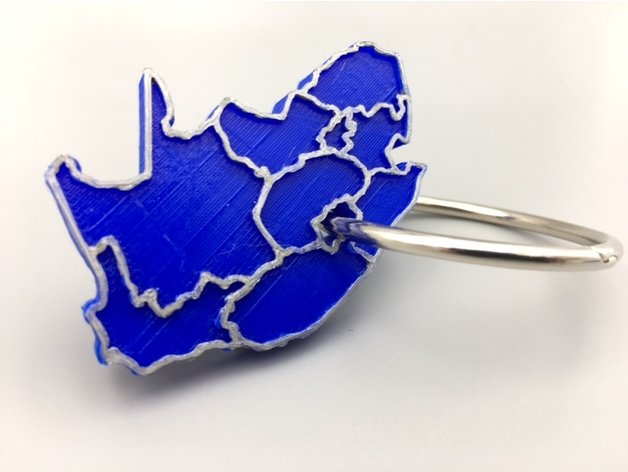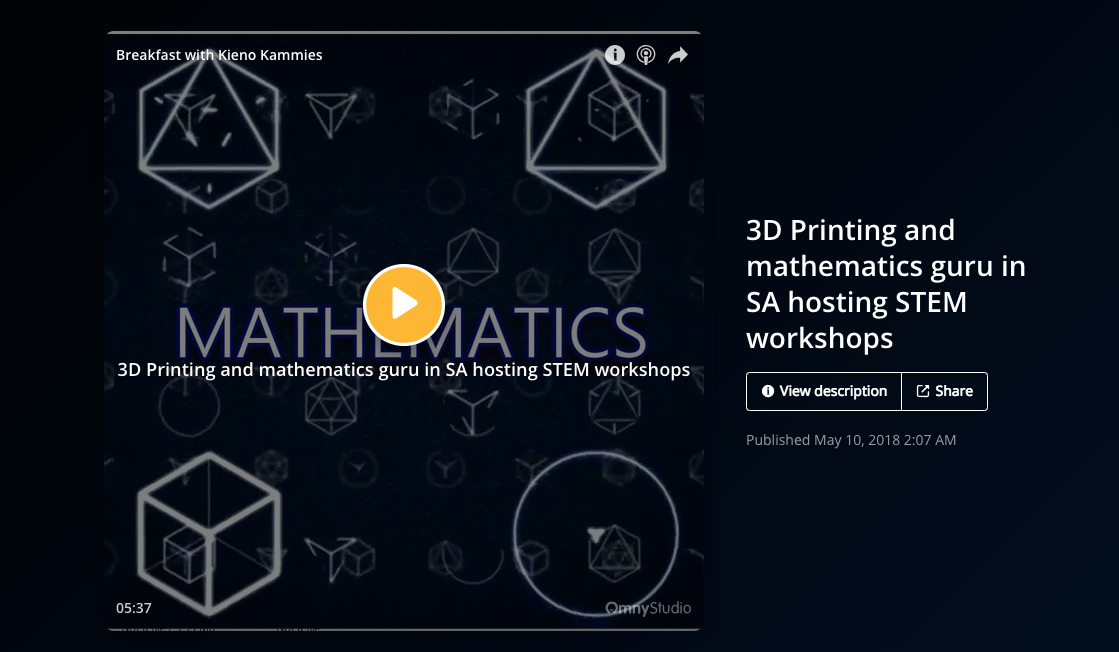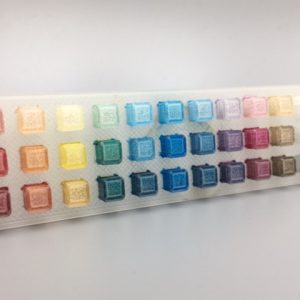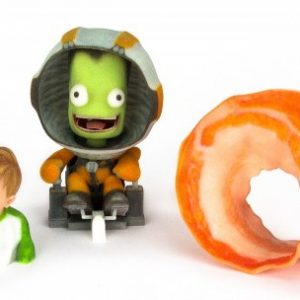This month I had the opportunity to speak about mathematics and 3D printing in South Africa, in Johannesburg, Pretoria, Cape Town, and Kimberley, as part of the U.S. Embassy Speaker’s Program through the Department of State. For this visit I made a special 3D-printed keychain to give away at events, which you can download for free:
This 3D model highlights the nine provinces of South Africa. By running a Loose Leaf Ring through the landlocked country of Lesotho, you can make a keychain. If you don’t have a 3D printer or if you want a fancy metal version, you can order one from our geekhaus Shapeways shop.
The design process is easy and you can use it to create your own custom keychains:
- Draw or trace an outline with a Sharpie marker and take a photo
- Fill in the outline with a Sharpie and take another photo from the same angle and distance
- Convert both photos to SVG format using an online converter (like this one)
- Import the SVGs to Tinkercad and extrude so the outline is taller than the filled-in shape
- Do your best to position, align, and size the outline and the shape to match
- Export as STL and 3D print (see Pro Tip below)
- Color the embossed lines with a Silver Sharpie or Uni-Paint marker
Pro tip: Sometimes when printing text or lines, and depending on the width of those lines, a 3D printer will print thin walls with gaps inside the lines. You can see this in the green photo. By tweaking settings you might be able to get your printer to fill in those gaps. What worked for us here was to set Wall Thickness to 1 Shell, resulting in the nicely-lined blue model shown in the photo above.
Some of the talks I gave in South Africa began with a design walkthrough for this keychain. Step through the slides below if you want to see how the design was developed and printed:
I was so busy in South Africa that I hardly even had time to take any photos! But here are a few, in case you’re interested. This is a poster from one of the events in Pretoria. In South Africa, the word “fundis” in my talk title basically means “geeks” or “geek-experts”:
Here’s a photo from the end of that same event, when students and faculty came up to see all the cool 3D prints:
I also had the opportunity to speak at and then visit the facilities of the Council for Scientific and Industrial Research (CSIR) National Laser Centre in Pretoria, where we got to see two really amazing 3D printers. It’s difficult to see in this picture, but inside the case is a 3D printer that prints in metal, with free-moving arms that allow the metal to be deposited and then fused anywhere in space. You then use the big black glove-holes to clean and remove the resulting object.
The second amazing printer we saw was actually the largest 3D printer in the world. In this picture the giant thing is the printer, and the print is created inside with titanium laser sintering. The finished print comes out of the conveyor belt somehow when it is done. You can read more about this amazing machine in the article South Africa has the world’s biggest 3D printer – and it takes up to R7.5 million in titanium powder to fill it.
Later, while I was in Cape Town, I had the opportunity to be on Kieno Kammie’s popular radio show, and the recording is online! Near the end, Kieno asked me if I could reprint our U.S. president…
——————
As an Amazon Associate we earn from qualifying purchases, so if you’ve got something you need to pick up anyway, going to Amazon through this link will help us keep Hacktastic running. Thanks! :)










Leave a Reply